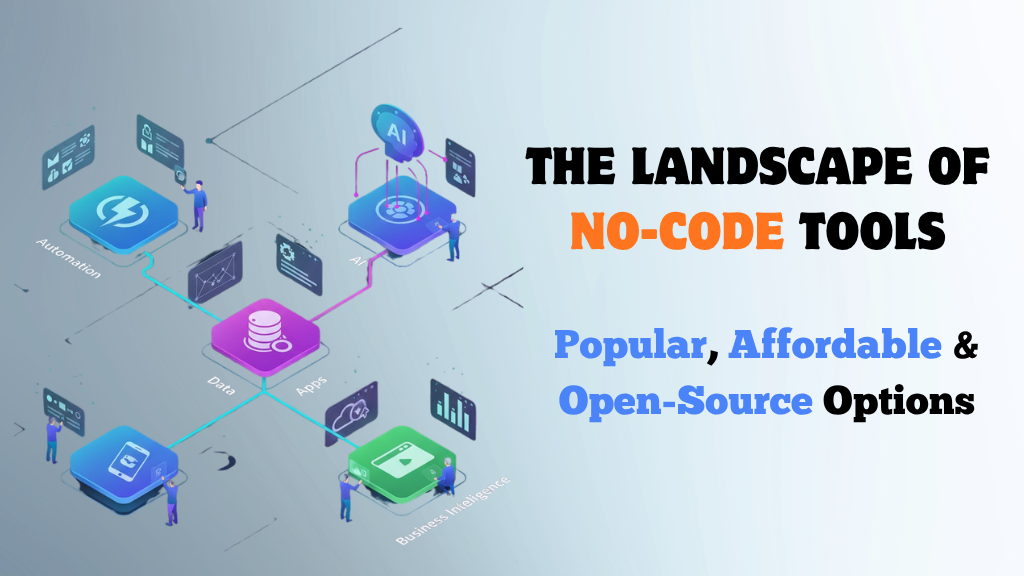Leaders in Polish organizations use dashboards and reports to approve budgets, start campaigns, and set goals every day. But what if the information behind those pictures is only &qoat;almost&qoat; right? In a data-driven world, even small mistakes can quickly lead to missed predictions, wasted money, and strategic blind spots.
This is where data cleaning really shines. It is not only a technical job, but it is also the most important part of managing data quality. It is the difference between making decisions based on guesswork and making decisions based on data. In this article, we'll talk about how dirty data messes up results, give examples of decisions made before and after that are relevant to Polish companies, share best practices for ETL, and give you a useful checklist for making your data cleaner. We'll also talk about how Moltech's services for preparing and transforming data help you go from fixing things as they happen to getting consistent, high-quality work at scale.
- e dates, currencies, or IDs
- Flagging or filling in missing values when the situation calls for it.
- Checking information against the rules of the business.
- Standardizing fields so that different systems can finally "talk" to each other.
Cleaning data the right way makes the five most important parts of data quality better:
- Accuracy:
Does the data accurately reflect reality? - Consistency:
Are all systems showing the same customer in the same way? - Completeness:
Are there any important fields that are missing? - Timeliness:
Is the information new enough to use? - Uniqueness:
Are duplicates making metrics look bigger or changing KPIs?
Why This Is Important, Especially for Polish Companies ?
Analysts get frustrated when data is wrong or doesn't match up, but it also quietly leads to bad business decisions every day.
- When historical data is messy, demand predictions go too high or too low, which affects staffing and inventory.
- Attribution in marketing : If customer IDs are different in different tools, ad spending goes to the wrong channels, which wastes money.
- Finance and compliance : If currencies (like PLN), dates, or tax codes don't match, revenue recognition doesn't work.
- Management reporting : When the numbers in one report don't match the numbers in another, leaders lose faith in the data.
These problems aren't small; they cost money in a measurable way. Research in the field backs it up: According to Gartner, bad data costs businesses millions of dollars every year.
Surveys show that data professionals spend up to a third of their time cleaning data instead of analyzing it.
The business cost of unclean data (with quick polish stories)
Unclean data doesn’t just make dashboards messy—it changes decisions.
- Duplicate customers inflate CAC :
Imagine a Polish B2B SaaS company with 12% duplicate client accounts. Sales ops attributes 50 deals to paid ads, but 13 of those “new” customers are existing clients entered under slightly different names. Result: over-investment in ads, under-investment in customer marketing. - Wrong units, wrong inventory :
A retailer receives supplier data where some quantities are in cases and others in individual units. A regional buyer approves a bulk purchase after reading “1,200 units,” unaware it actually means 1,200 cases. Warehouses overflow, and markdowns eat margins. - Misaligned time zones, missed targets :
A finance team in Poland closes the month assuming all transactions align to UTC. Asia-Pacific late-day transactions slip into the next period, distorting revenue recognition and triggering unnecessary recovery actions.
Before-and-after decision :
Example 1:
- Before : A demand forecast trained on inconsistent SKU names (“XL Tee,” “Tee-XL,” “Tshirt-XL”) misses 18% of related sales history. Planner orders 20% less stock to avoid overstock.
- After : Standardized product taxonomy and deduplicated SKUs increase historical match rates. Forecast error drops by 15 points, avoiding stockouts and rush shipping costs.
Example 2:
- Before : Churn model flags 9% of active users as “at-risk” because usage field mixes weekly and monthly counts. Retention budget spread thin across happy and unhappy customers alike.
- After : Clear data contracts enforce consistent units and definitions. True at-risk users receive targeted offers, improving net retention by two percentage points.
Example 3:
- Before : Executives pause expansion into a new region because “trial conversions look weak.” Later, data cleaning reveals outdated UTM tags caused incorrect tracking. Conversions were actually fine.
- After : Standardized tracking parameters and periodic validation fix attribution. Expansion proceeds confidently, saving a quarter of delay.
Key takeaways for Polish organizations:
- Data errors directly impact budget, capacity, and strategic decisions.
- Many “business problems” are really data definition and cleaning problems.
- Quick wins often come from standardizing identifiers, units, and timestamps.
How the Process of Cleaning Data Fits Into Managing Data Quality ?
Data cleaning is just one part of a bigger system called data quality management that looks at your data from start to finish.
You can think of it as a never-ending loop where data is checked, corrected, validated, enriched, and monitored to make sure it always meets business standards.
This repeatable method makes sure that data stays accurate, compliant, and useful across all departments in Polish businesses — from finance to operations.
1. Profile and Check
You need to know what you're working with before you start fixing things. Profiling shows you the health of your data by showing you the ranges, outliers, null values, and inconsistencies that could cause problems later.
- Sample datasets to learn about their quality and structure.
- Find duplicates or schema drift, which happens when field types or definitions change without warning.
- Put the most important problems first, not by how many there are, but by how they affect the business. One wrong customer ID in your billing system can cost more than hundreds of small text errors.
This step is like doing tests before you start treatment.
2. Fix and Make Sure Everything Is the Same
The next step is to fix and line up the problems once you know what they are. This is where you make sense of the mess by making sure that every date, currency, and ID looks and works the same way.
- Standardize formats for dates, currencies (including PLN), phone numbers, addresses, and country codes.
- To make sure that information is the same across systems, use reference data like product taxonomies, customer master records, or charts of accounts.
- Use matching rules and survivorship logic to combine duplicates, making sure to include Polish identifiers like NIP and REGON.
This is where the data starts to be "trustworthy" again.
3. Check
Validation means making sure that your data makes sense in the context of your business logic. It's one thing for a field to be there; it's another for it to follow the rules.
Use rules like these :
- “Order Date must be less than or equal to Ship Date.”
- “Currency ∈ PLN, EUR, USD.”
- “Email must have a real domain.”
Use lookups to make sure that IDs are in master systems like CRM, ERP, or HR.
This step keeps bad data from getting into your reporting or analytics systems, which is a common cause of errors later on.
4. Add More
It's good to have clean data — more complete data is better. Enrichment fills in the blanks by linking your internal data to reliable outside sources.
- Add missing fields to verified datasets, such as TERYT codes, industry codes, or geographic data.
- Use common business definitions and calculation methods to standardize data so that everyone, from finance to marketing, can understand it.
This is where your data goes from being useful to being valuable.
5. Keep an Eye on Things and Make Changes
You can't just "set it and forget it" when it comes to cleaning data. As your business grows and your systems change, the quality of your data naturally changes.
That's why you should always check and improve your data.
- Set SLAs for the accuracy, timeliness, and completeness of your data.
- Set off alerts for strange patterns like null spikes, failed deduplication, or records that come in late.
Regular checks stop small problems from turning into big, expensive data problems.
Best ETL Practices for Polish Businesses
Following some basic engineering rules is important for building a strong data pipeline — especially when dealing with financial, customer, or regulatory data in Poland:
- Schema-on-write with agreements: Before data goes into the system, define what "good" data is. Use strict data types and put records that aren't valid in quarantine.
- Idempotent loads : Running a job again should never make duplicates or raise revenue.
- Referential integrity : Always check join keys and mark orphan records.
- Slowly Changing Dimensions (SCD) : To keep things accurate over time, keep old versions of customers and products.
- Change Data Capture (CDC) : Instead of reloading everything, stream changes. This keeps data up to date and cuts down on resource costs.
- Software that tests : For transformations, write unit tests; for joins, write integration tests; and for backfill tests, compare historical accuracy.
Cleaning data is just one part of the whole thing, but it's the part that keeps everything else together.
Adding cleaning to a structured data quality management process helps your analytics, reporting, and AI models all at the same time.
Clean data not only makes things more accurate, but it also builds trust within your company and gives leaders the confidence to make decisions more quickly and better.
Common Data Cleaning Pitfalls That Break Business Decisions (Polish Context)
Even experienced data teams run into the same problems again and again — especially when working with multiple systems and legacy data structures. These small inconsistencies might not look dangerous at first, but they quietly distort KPIs, confuse teams, and lead to poor business decisions.
Let’s look at the most common ones and how to avoid them.
1. Multiple Versions of the “Truth”
It’s one of the oldest problems in data management — every system thinks it’s right. Your CRM, billing system, and product logs each claim to have the “real” customer record.
Without a clear system of record or rules for which source wins when there’s a conflict, your reports start to disagree.
Marketing’s “active customer” number doesn’t match Finance’s, and leadership starts losing trust in both.
How to fix it:
Declare a system of record for each entity — customers, orders, products — and publish a data contract so everyone knows which source to trust.
2. Free-Text Fields Everywhere
Data entry flexibility feels convenient until it breaks your analytics. One person types “Warsaw,” another uses “W-wa,” and someone else writes “Warszawa.” The system sees three different cities, and suddenly your territory analysis or regional segmentation falls apart.
How to fix it:
Map free-text inputs to controlled vocabularies during ingestion or use dropdown lists in data entry forms. It’s a simple fix that saves countless hours of cleanup later.
3. Type and Unit Mismatches
It’s easy to overlook small inconsistencies that have big consequences. A currency stored as text, quantities mixing metric and imperial units, or percentages recorded as both 0.75 and 75 — these differences can completely distort your KPIs.
How to fix it:
Define data types and units at the schema level. Validate them during ingestion so errors don’t make it into your reports or machine learning models.
4. Time Zone Confusion
Time zones are one of the most underestimated data quality issues. If you ingest timestamps from multiple systems — some in local time, others in UTC — your metrics will shift subtly depending on where and when data was captured. This leads to inaccurate daily sales, delayed activity counts, or reporting inconsistencies between systems.
How to fix it:
Always store timestamps in UTC, and if you need local context, include a separate local time field. This keeps your data consistent across time zones and systems.
5. Hidden Duplicates
Duplicates are rarely obvious. Slight name variations like “Acme Sp. z o.o.” vs “Acme LLC,” or device IDs that reset after app updates, can make it seem like you have more customers or transactions than you actually do.
How to fix it:
Implement fuzzy matching and survivorship rules based on identifiers such as NIP or REGON. Regularly review potential duplicates before they inflate your KPIs.
6. Late-Arriving Facts
Returns, adjustments, or backdated transactions often arrive after reports are already published. If your system doesn’t update historical tables, your revenue or inventory numbers will be overstated — and no one will realize it until it’s too late.
How to fix it:
Set up pipelines to detect and update late-arriving facts automatically. Use change data capture (CDC) or incremental loads to refresh affected records without reprocessing everything.
7. Over-Aggressive Deletion
It’s tempting to delete “bad” data during cleaning — but this can hide deeper problems. If rows are dropped instead of quarantined, you lose valuable clues about where errors are coming from, and your analysis might become biased.
How to fix it:
Quarantine suspicious data instead of deleting it. Keep a raw, unmodified copy of every dataset so you can audit and reprocess it when needed.
Real-World Mini Cases: Before/After Decisions (Polish Context)
| Scenario | Situation | Data Cleaning Actions | Decision Impact |
|---|---|---|---|
| Marketing ROI Turn-Around | A Polish consumer brand saw ROI drop sharply after a channel mix change. Investigation revealed mismatched campaign IDs between ad platforms and analytics, and inconsistent customer IDs between web and CRM systems. | - Canonical campaign ID mapping - Deterministic identity resolution - UTM governance | Budget was reallocated confidently. ROAS improved by 23% quarter-over-quarter as reporting reflected reality. |
| Supply Chain Smoothing | A manufacturer in Poland faced frequent stockouts despite conservative forecasts. Root cause analysis showed suppliers sent inconsistent lead-time units and calendars (business days vs calendar days). |
- Normalized calendars - Validated lead times at ingestion | Forecast accuracy improved; expedited shipping costs dropped18% within two months. |
| Finance Integrity and Trust | A fintech startup’s MRR fluctuated due to proration and refund events posted after period close. | - Implemented CDC-based ingestion - Handled late-arriving facts - Used SCDs for pricing plans | Board reporting stabilized. Leadership ended “data debate” meetings and focused on strategy. |
How moltech helps: data preparation and transformation services ?
Reliable, clean, and explainable data isn’t about heroics—it’s about building the right systems. Moltech provides people, processes, and platforms to make this real.
What we do ?
- Data preparation at scale
- Source onboarding with schema discovery and profiling
- Standardization of dates, currencies (PLN, EUR, USD), addresses, and taxonomies
- Deduplication and identity resolution across CRM, ERP, web, and applications
- Production-grade transformation
- ETL/ELT pipelines with unit tests, data contracts, and idempotent loads
- Slowly changing dimensions and late-arriving fact handling for accurate history
- Referential integrity enforcement and rule-based validation
- Continuous data quality management
- Observability: freshness, volume, distribution, schema drift
- KPIs and SLAs linked to business metrics
- Root-cause analysis and remediation playbooks
- Business-ready delivery
- Curated semantic layers for BI and self-service analytics
- Finance-grade reconciliation and audit trails
- Secure environments with masking and role-based access control
- What you get
- Fewer surprises in executive meetings
- Faster time-to-insight without endless cleanup
- Decisions you can trust because lineage is clear
Conclusion: Clean Data, Clear Decisions (Polish Context)
Data cleaning isn't just something you do in school; it helps you make money and gain trust. When your data is correct, consistent, and up to date:
- Models work better
- Reports show what really happened
- Teams make decisions more quickly and with more confidence
The cost of not doing anything is wasted ad money, missed forecasts, compliance risk, and doubt in the boardroom.







